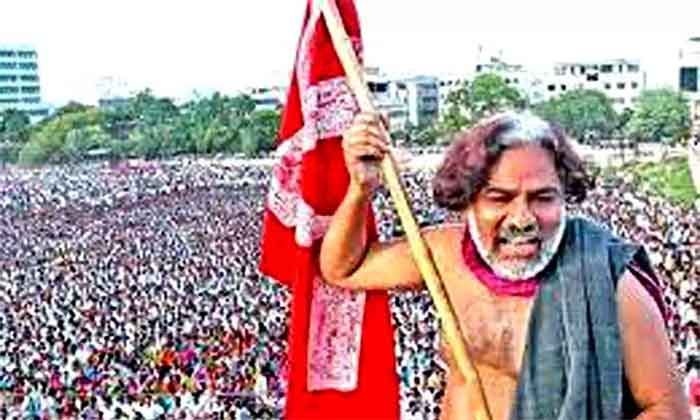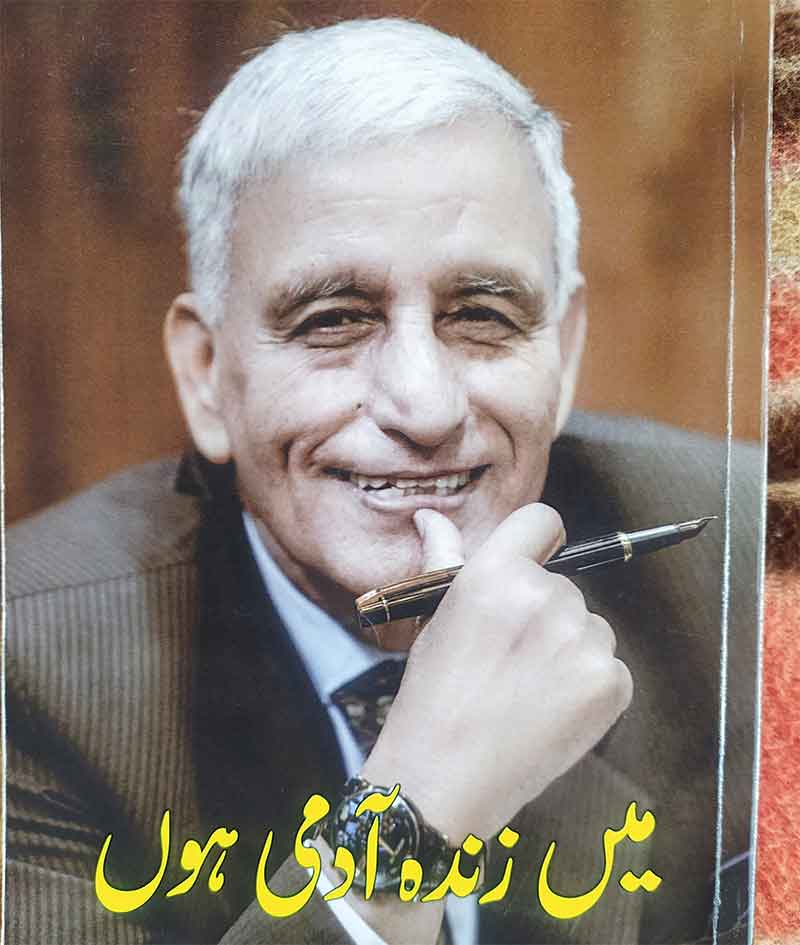
There are very few in public life who get the love, affection and respect of huge number of people such as Gummadi Vittal Rao who was popularly known as Gaddar in the entire country but particularly in Telangana region. His poetry, lyrics and the style all became iconic as youths, women and men in the Andhra Telangana region would not merely flock to watch him performing but also imitate his style. There is no doubt in saying that Gaddar through his songs became the most powerful voice of resistance against the culture of impunity, state power and feudal exploitation.
Born in Medak district of Hyderabad state, the growing years saw the greater Andhra Movement as well as the historic peasant revolt of Telangana which inspired millions outside the state. That was the period when means of communications were little and no social media but stories of left revolutionary movement was always on the lips of activists elsewhere.
In 1953 when the government of India appointed a State Reorganisation Commission, it submitted the report in 1955 favoring creation of Telangana state but there was a counter movement for Greater Andhra Pradesh. Ignoring the wider Protest and sentiments of Telangana people, government decided creation of Andhra Pradesh State and Hyderabad its capital city. The biggest movement that rocked the state since the inception of Andhra Pradesh was the student protests in January 1969. Interestingly M Channa Reddy, who was spearheading the movement under his own Telangana Praja Samithi merged it with the Congress party and was later made the Chief minister of Andhra Pradesh but the people’s resentment remained. Gaddar’s popular album came in 1971. He was part of these struggles and understood the emotion and sentiment of his people.
After the emergency, Gaddar became part of the radical left led by People’s War Group’s cultural wing Jan Natya Mandali. The popular cultural thoght in Telangana was always sympathetic to the left wing radicalism because of historical reasons of exploitation and the land struggle. Whether the ordinary landless ever got a land or not but the cultural team of Gaddar had popularised the perception that the leftwing will bring the revolution in the country. As the reach and power of the government grew day by day, the revolutionaries had to retreat in the deeper forest towards Chhattishgarh and Odisha. While there was tremendous respect for Gaddar and his poetry, Dalits were least interested in left wing radicalism. The growth of Ambedkarite movement, self assertion and faith in constitutionalism also created a feeling that the revolution envisaged by violent methods are not going to succeed and it will only ruin the youths of these communities.
Two big massacres of Dalits in Andhra Pradesh actually reflected the fact that nothing much changed for the Dalit landless people and feudal lords remain at large with impunity. Karmchedu was a village in Bapatla district of Andhra Pradesh dominated by the Khamma castes feudal landlords, they killed 6 Dalits belonging to Madiga community and injured many others on July 17th, 1985. People’s War Group avenged the massacre by killing one of the main accused but Ambedkarite sections were opposed to such violent move and followed the constitutional path. While Gaddar’s popular poetry and popularity was always useful to spread the message of state impunity as well as feudal structure, there was very little about Caste system and its root causes. Mostly, the left movement that time, we not keen to speak about caste and considered the ‘state’ as its main enemy which was a complete contradiction to the Ambedkarite version which wanted a strong state to protect the dignity and interest of the Dalits. Karmchedu made Gaddar’s revolutionary songs more popular and he became the voice of the masses.
Six years later, on August 6, 1991, a massacre committed by the Reddy landlords in Tsunduru in Guntur district and this time the community which faced the brutality was the Malas, the biggest and assertive Dalit community in Andhra Pradesh. About 22 Dalits were brutally killed by the Reddy terrorists. This shook the nation and for the first time a special court was formed to hear the witness with in the village. There was lots of pressure on them. It took a lot of time for the local court to give its judgement but finally the High Court absolved them. In the Karmchedu case, one person got life imprisonment and thirty others three years imprisonment.
I visited Tsunduru when the case was at the village and complaints were coming there witness were being threatened. I was shocked to listen the tales of horror by the Reddys. Interestingly, both Reddys and Khammas are two biggest power communities of Andhra Telangana and Malas and Madigas two most assertive Dalit communities who became victim of the the Reddy Khamma terror.
After the Tsunduru visit, I visited Gaddar Anna at his house. It was difficult to meet because attempt were made on his life. I had heard stories of Gaddar’s influence on masses, his poetry and ideological clarity. I thought, I would ask him a few questions whether he had any question with his party’s high command. He was the most popular face of People’s War yet never ever considered to be its main ideologue. Was it because the top domain of the left forces were still in the hands of the power communities of Andhra Telangana.
Some how, I was disappointed with my meeting. Gaddar, that point of time, was not keen to speak up or open up on the issue of caste but he had started putting Ambedkar and Buddha portraits. The problem that time was that most of his songs spoke of discrimination but mostly on state impunity and ‘feudalism’ but the root cause of it ? The root cause of feudalism is our caste structure and unless you speak up against the social tyranny, merely, suggesting the state impunity for everything wont work.
Whether the left parties were able to use his iconic status or he himself ever had the courage to use it was not the question. I had felt the suffocation in him during our talks but he was not ready to take his party head on. We dont know why as he grew up in the party and had known the party politics more than anybody else.
In the Talangana movement, he again flourished. His songs were the voice of the people. He traverse the state and people thronged to listen his magic words. He realised then power of politics and how people still have faith in constitutionalism. In 2010, he completely dissociated with the Maoist groups and decided to plunge in the electoral politics but alas that was quite late. There were also fluidity of ideology in him. Off late, he started speaking about Baba Saheb Ambedkar and Buddha. Suddenly, we also found him speaking about spirituality, Vedanta and Vivekananda too. Anyway, like every one of us suffer from changes, so was Gaddar too but in his heart was the welfare of his people.
Recently, we saw Gaddar on the stage when Rahul Gandhi visited Telangana where he kissed Rahul. He also said that his party will contest upcoming elections.
Gaddar remained a cultural icon of Telangana and I can say it, that outsiders like us, listened about Telagana’s heroic struggle to his heroics, through his iconic style on thev stage where millions will just come to watch him speak and perform. We dont have any one like him in the North India. The only one who inspire and is stunning is Shambaji Bhagat in Maharashtra whose poetry and performance look similar like Gaddar.
The passing away of Gaddar is a huge loss to people’s movement and revolutionary poetry who inspired an entire generation of activists using art and culture as form of resistance against oppression and exploitation.
A big salute to Gaddar
















































